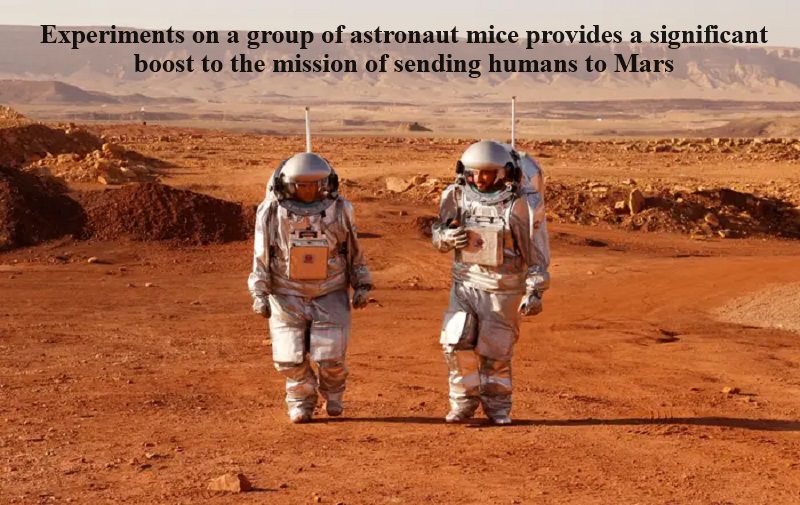
Astronauts experience a significant loss of bone density during extended missions in microgravity conditions. This has been a major hurdle in planning lunar landing missions and future Mars missions, as rapid bone density loss can be life-threatening.
However, recent experiments conducted on a group of brave astronaut mice have offered a potential solution to this problem, bringing humans closer to the possibility of traveling to Mars.
These mice became the first animals to safely return to Earth after a space journey, marking a crucial milestone in preventing bone density loss in astronauts during extended microgravity missions. The results of this study were published in the npj Microgravity journal.
The groundbreaking experiment involved sending 40 mice to the International Space Station (ISS) aboard a SpaceX vessel in 2017. Researchers from the University of California, Los Angeles (UCLA) and the Forsyth Institute in Massachusetts developed a therapy using a supplement called neural epidermal growth factor-like 1 protein (Nell-1) to address the bone density loss associated with microgravity exposure.
While aboard the ISS, astronauts Peggy Whitson and Jack D Fischer administered either the Nell-1 protein or an inactive saline solution to the mice. Another group of mice in Florida received the same treatment for comparison.
Half of the mice remained on the ISS for nine weeks to simulate extended space travel, while the other half returned to Earth after four and a half weeks, reaching a laboratory within 72 hours. This marked the first instance of live mice re-entering Earth’s atmosphere and safely returning to the surface in the history of US space travel.
The study’s results revealed that the treatment “significantly increased bone formation in both flight and ground-control mice without apparent adverse effects.” This therapy shows promise as a potential solution to mitigate extreme bone loss caused by long-duration microgravity exposure.
NASA has praised this study as a significant step toward a future Mars mission. Planning for a potential Mars mission in the late 2030s or 2040s is underway, but addressing the issue of significant bone density loss in astronauts is a critical step in making this mission a reality.

Post Your Comments